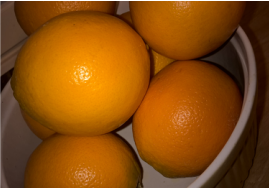 While natural, d-limonene is a strong chemical that can cause problems
While natural, d-limonene is a strong chemical that can cause problems
It is this solid form of grease that must be removed by operators. In collection system grease control there are three main options:
- Physical removal - using mechanical or water jets to dislodge the clogs and move the grease as smaller chunks. This simply moves the grease down stream for further collection/capture.
- Microbial approach - adding microbes with fatty acid degrading capabilities will shorten the fatty acid chain length (making the grease convert first to soluble BOD then new cells, carbon dioxide and water). This is the same activity that occurs at the wastewater treatment plant - resulting in the final mineralization of grease. Micrbial modified grease will not redeposit as hard grease which is key to avoiding SSO and lift station problems. However, microbes must be introduced correctly and have time to form the biofilm that protects pipes from grease accumulation.
- d-limonene or solvents - a common chemical approach to grease removal is to use d-limonene (that strong orange odor) or other solvents such as butyl-cellosolve to solubilize the fatty acids. The problem here is the solvents rapidly emulsify the grease allowing for the slug to arrive at the treatment plant in a form that is difficult to separate in primary treatment. The long chain fatty acids that read as FOG and high COD/BOD remain in solution and enter secondary biological treatment. In high concentrations this can cause problems with effluent grease permits, floating solids/scum on clarifiers, and foam on the aeration basin. Additionally, fatty acids also make wasted biological solids entrap more water making disposal more difficult.
The potential for a slug of solubilized or emulsified grease to hit the biological treatment unit is why I do not often recommend the use of solvents in collection systems. While in a few cases they are needed to remove heavy buildup, it should not be the first treatment option. If problem areas of a collection system are identified - steps can be taken to reduce maintenance costs and prevent SSOs. Most of the actions include the installation and maintenance of grease traps at restaurants and high density developments. If problems still exist, the use of a microbial dose with periodic physical monitoring/jetting often can keep the line free flowing and the lift-station clear.

 RSS Feed
RSS Feed